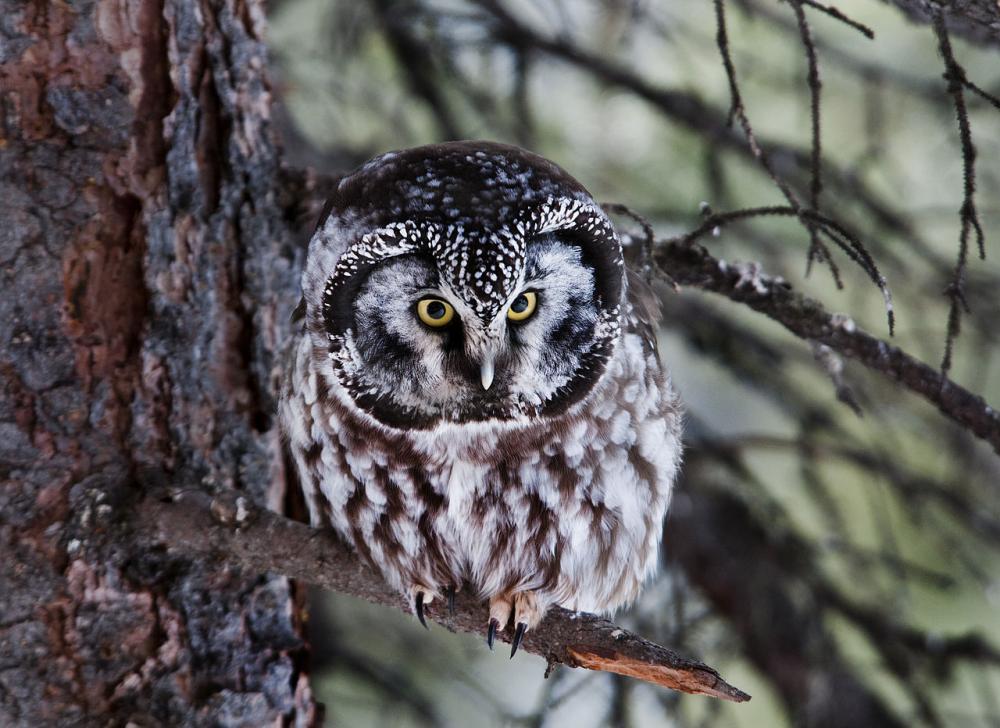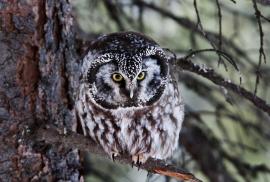Guide to Boreal Birds
Overview
This small, secretive owl is considered one of the rarest winter visitors from the North. Its retiring habits cause it to be overlooked, and it is easily confused with its more common relative the Northern Saw-whet Owl. It is entirely nocturnal, spending the day concealed in dense spruce or a hollow tree. It preys mainly on rodents.
Birds from northern portion of its breeding range may regularly migrate but those in southern portions are generally resident year-round. Birds occasionally move much further south in years of low prey availability but they are difficult to detect because of nocturnal habits and small size. The Boreal Owl occurs mainly in areas of extensive mature coniferous forest intermixed with small openings and patches of younger forest. It relies largely on holes made by woodpeckers in large trees for its nest cavities, and it feeds on small mammals, especially voles. Like many owls, the Boreal Owl is susceptible to pesticides so widespread spraying for spruce-budworm control and other forestry applications could be harmful. Forestry practices that protect more forested habitat from logging, increase rotation periods, and maintain large tracts of mature forest will help maintain stable populations.
Description
9-12" (23-30 cm). W. 24" (61 cm). A rare, robin-sized owl without ear tufts. Brown with white spots above, rust-streaked below. Similar to Northern Saw-whet Owl but larger, with dark borders on facial disks, more spotting on upperparts, spotted (not streaked) forehead, and yellow (not dark) bill.
Voice
Rapid series of whistled notes.
Nesting
4-6 white eggs placed in a woodpecker hole or other tree cavity or in the abandoned nest of another bird.
Habitat
Boreal coniferous forests and muskeg.
Range/Migration
Breeds in Alaska, Yukon, Saskatchewan, Manitoba, Quebec, Labrador, and Newfoundland south to northern British Columbia, Colorado (in Rocky Mountains), southern Manitoba, Ontario, and New Brunswick. In winter wanders rarely south to northern tier of states. Also in Eurasia.



